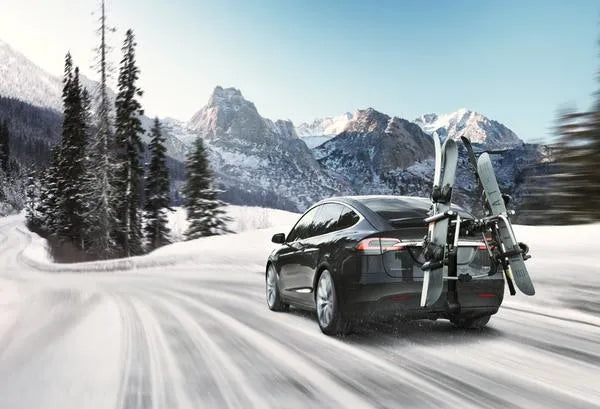
Understanding Electric Vehicles in Warm Climates: Crucial Insights
A prevalent worry among electric vehicle amateurs is the adverse impact of frosty conditions on their EV's power source.
Lithium-ion cells, the heart of EVs, are renowned for their outstanding energy retention and prolonged service life.
But when these cells face icy climates, they can become inconsistent.
For instance, in places like Alaska or the vast snowy landscapes of Canada, the battery efficiency of an EV might not match that of another one in balmy California.
Many believe that an electric vehicle's optimal environment is a sun-drenched locale to maintain the best battery functioning.
However, this belief couldn't be further from the truth.
Both scorching and freezing temperatures can negatively affect them.
Here’s a closer look at the influence of warm climates on your EV:
Understanding Electric Vehicles in Warm Settings
Distance Coverage
Typically, electric cars can traverse around 217 miles with one full charge, which is somewhat less than a conventional car's 300-mile range.
Take the Tesla Model S, which boasts a 405-mile range. In contrast, a Mercedes-Benz sedan might cover around 469 miles when the tank's brimming.
Research indicates that in conditions of 95 degrees Fahrenheit with the AC operational, the EV range can dip by 17%.
While Tesla has refuted such statistics, emphasizing that their user feedback reveals just a 1% range decline, any decrease can impact how EV owners use their vehicles.
Notably, a reduced distance coverage requires more precise trip planning, and charging frequently can heighten the overall EV ownership costs.
Battery Longevity
Inevitably, EV batteries will show signs of wear as time goes on. Exposing them to excessive heat can exacerbate this deterioration process.
Some reports indicate that with optimal care, EV power sources can outlast even a 20-year period, which surpasses the standard 8-year warranty from most manufacturers.
But hotter climates can shrink this lifecycle, necessitating early battery replacements. Moreover, soaring temperatures can hinder battery efficiency, affecting the car’s range and charging duration.
Recurring rapid charges can also diminish battery health, as this method generates high heat levels, straining the batteries.
For peak battery health in warmer climates, consider strategies like parking in shade, leveraging sunshades, minimizing fast charger use, and parking away from direct sunlight. Note that some EVs come with in-built battery temperature regulation systems.
Tire Integrity
Warmth can considerably affect the reliability of your EV's tires due to:
-
Pressure Alterations: Rising temperatures can swell the air within tires, potentially causing overinflation, which might compromise the vehicle's control and elevate the likelihood of tire ruptures.
-
Tread Erosion: In dusty or sandy regions, high heat can expedite tire wear, affecting grip and raising hydroplaning risks.
-
Tire Aging: Prolonged exposure to heat and UV can hasten tire wear, introducing potential vulnerabilities.
Mid-Range Charging Strategy
Maintaining your battery's charge around the 50-60% mark can mitigate high temperature effects. Such a strategy provides several advantages, from minimizing battery wear to quicker charge times and alleviating range concerns.
By customizing your charger's settings or using intelligent charging systems, you can easily uphold this recommended charge range.
Effect of Extreme Weather on EV Batteries
Cold conditions impede the battery's chemical processes, diminishing its efficiency and range. Meanwhile, overheated settings can induce quicker battery wear and hinder its performance. Rapid temperature shifts can strain the battery, impacting its long-term efficiency.
Ensuring Your EV's Well-being in Warmth
Prioritize battery coolness, efficient AC use, and tire care. Remember that the surface temperature can increase tire degradation.
Protecting Your EV Battery from Climate-Induced Wear
Shield your EV from temperature extremes, maintain proper charging habits, and use heating or AC systems judiciously.
Charging Forward with A2ZEV
Committed to streamlining the EV charging experience, A2ZEV offers a plethora of user-friendly charging solutions, striving to eradicate range concerns for Tesla and J1772 EV users. Charging at home or en route has never been this effortless.




1330 Comments
UuTYhHPEeCzG
JuUtYicAyNBHTnGk
cuGjvLkqTROeJN
mvuFZBIqEY
aoqPzJAnHrGVYcl